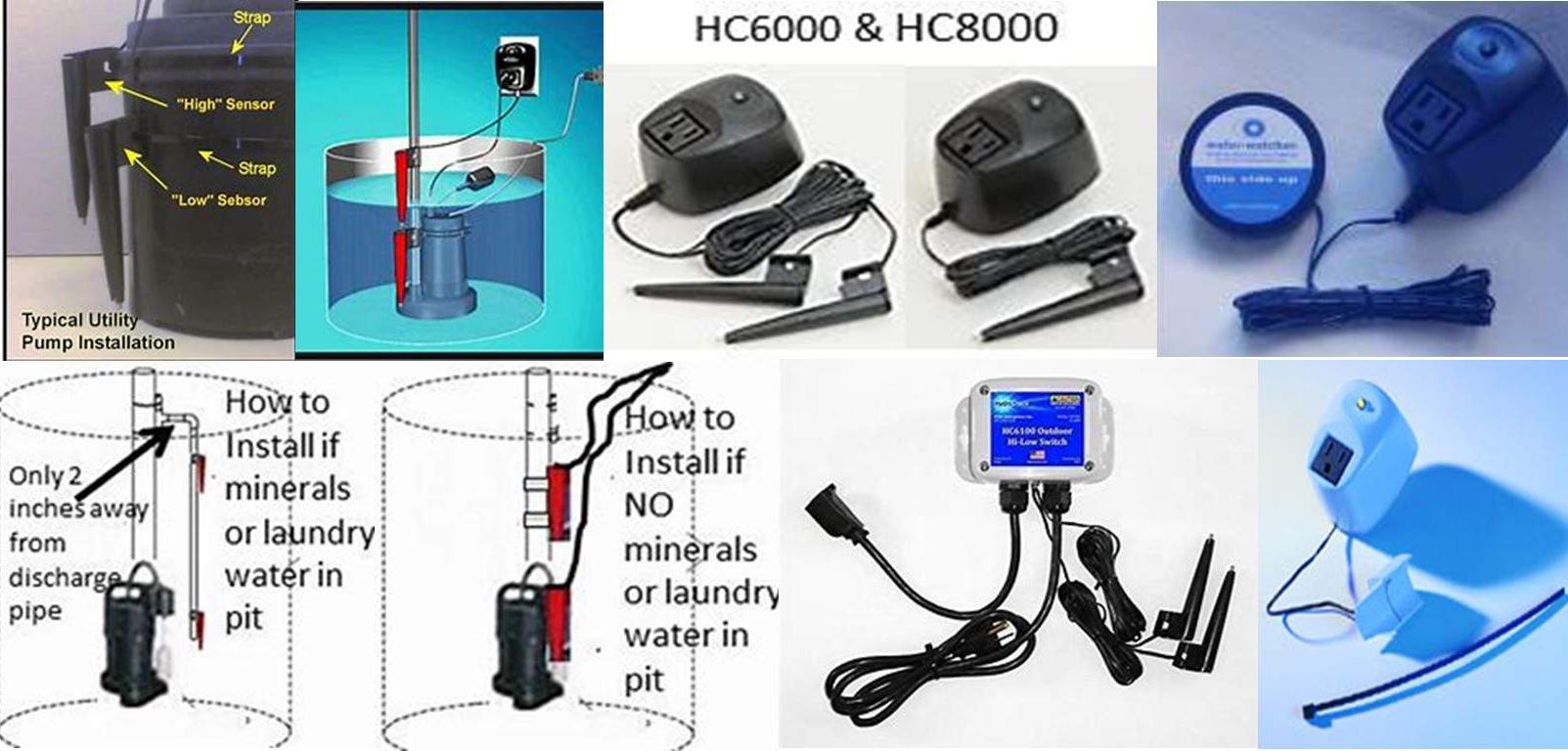Tethered Switch
- The tethered float switch has a tether with a float at the end. As the water rises so does the float. When the float it extended out the switch is triggered to send power to the pump to operate.
- If the float should ever fill with water, it will sink to the bottom and not operate.
- Many homeowners like to extend the length of the tether as much as possible so more water leaves the pit every pumping cycle; however the longer the tether the larger the pit diameter must be and the more potential there is for float hang-up.
Diaphragm Switch
- The diaphragm switch works off of water pressure build up from rising water in the basin. As the water level rises it pushes the rubber diaphragm inside the housing against the switch to send power to the pump to operate.
- The diaphragm switch does not last and must be replaced every one to three years.
Vertical Switch – Traditional
- The traditional vertical float switch has a plastic ball which floats up and down on a steel rod as the water rises and lowers in the pit.
- It is possible as the float rises on the steel rod for the rod to get hung up on something like the chord or the plastic hole it passes through. If the arm does get caught on the side of the basin, however, the float can still move up and down.
- If the float is hollow it could get punctured, filled with water and fail to operate.
Vertical Switch – Reed Dual in Cage
- The vertical reed dual in cage system has two float switches in a cage. The float switch works on low voltage called millivoltage. They are reed switches. which send an electronic signal to a control panel which tells the pump it is time to operate.
- Over time the vertical switch does well. The cage protects the float switch from getting stuck or hung up.
Vertical – Two Pole Mechanical Switch
- The vertical two pole mechanical switch has two separate circuits the switch controls. The solid buoyant float is attached by two single poles. The float rises slightly as the water rises in the pit. When the two circuits are closed, the switch triggers the pump to run.
- A puncture of the float cannot cause the pump to fail because it is buoyant and solid. The two pole float cannot get hung up or caught. The float also has a top protective guard for additional float protection.
- Over time the float switch will require replacement. It simply wears out. Replacing the switch is easy.
Electronic Sump Pump Switch
|



|

